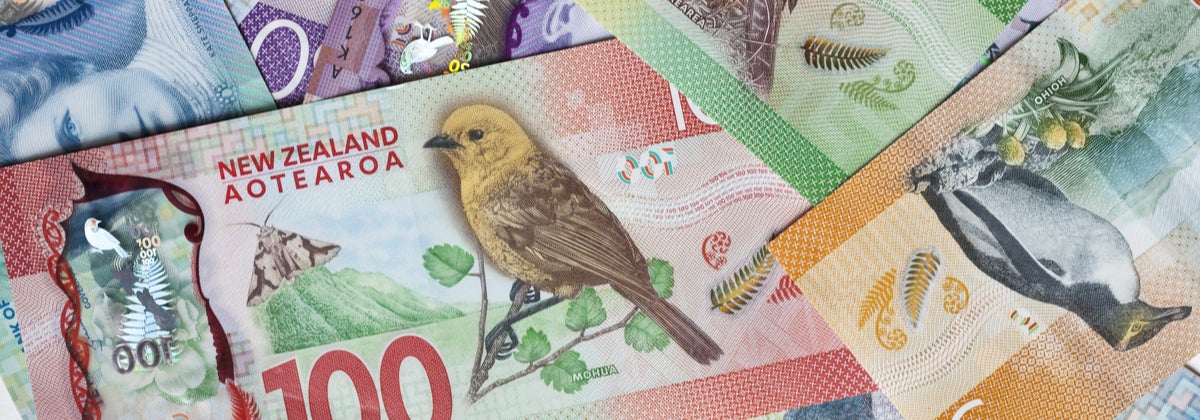KiwiSaver is generally talked about in relation to two main groups: those who are planning for retirement and young adults who are saving for their first home. Very rarely are children included in the KiwiSaver conversation. But there are many reasons why they should be. In this Canstar guide, we explore KiwiSaver for children and why enrolling them could be the best gift for their future finances.
KiwiSaver for Kids?
For many New Zealanders, KiwiSaver is an everyday part of their finances. Deductions come out of salaries and are transferred into Kiwisaver schemes. But what if you don’t earn an income and, instead, you spend your days at school – does KiwiSaver matter, then?
If you’re five, the concept of retirement is as remote as your 65th birthday. Likewise, what five-year-old is concerned with getting on the property ladder? But that doesn’t mean KiwiSaver for children is laughable. In fact, parents could be doing their children’s future finances a massive favour by enrolling them in KiwiSaver.
There are a few rules around joining KiwiSaver for those under 18, but if it is feasible for you and your child, it could go a long way.
Six key reasons to get KiwiSaver for children
1 It’s free!
What have you got to lose? Enrolling your child (or yourself) in a KiwiSaver scheme doesn’t cost a thing! Well, there may be some annual fees…
But joining KiwiSaver itself comes with no cost. Do keep in mind most people contribute to KiwiSaver through their salaries. If your child is young, they won’t have a salary to make deductions from. So you’ll have to make contributions on their behalf if you want to build up their savings. KiwiSaver may be free, after all, but kids sure aren’t.
The earlier you sign them up, the more potential they’ll have to grow their savings for retirement or a first home.
2 KiwiSaver can help with a first home
It’s no secret that buying a first home in New Zealand is challenging. And while your child may not be concerned with owning a three-bedroom with off-street parking, it’s never too early to start planning for your child’s financial future.
There are a few key benefits available to KiwiSaver members wanting to buy their first home.
One of these is the KiwiSaver First Home Grant. If you’ve contributed to KiwiSaver for at least three years, you may be entitled to the First Home Grant. With the grant, you can get $1000 from the government (to put towards a first home) for every year you’ve contributed to KiwiSaver (up to a max of five years). If you are looking to buy a new build, they’ll double it, giving you $2000 for every year!
Keep in mind, to qualify for a First Home grant, there are some requirements around minimum deposit amounts and income caps.
As a KiwiSaver member, you may also be eligible to withdraw your KiwiSaver funds to use as a deposit. How useful this is, depends on how much you have stored away. The earlier your child starts contributing, the more money they are likely to have.
3 KiwiSaver for children teaches good money habits
In our guide How to Teach Kids That Saving Can Be Fun, we talk about tips and tricks to help encourage children to save. KiwiSaver is an extension of forming these good money habits. Children won’t see immediate rewards from putting money into their account, but any money they put aside now will pay off for them later in life.
4 Parents can lead by example
Parents can talk endlessly about being sensible with money. But it’s a whole lot more effective to lead by example. Setting up KiwiSaver for children is a great opportunity to start some family discussions about money. Children like to be included as one of the grown-ups. If they have a KiwiSaver account just like you do, this should add some appeal for them to get involved.
5 Your choices now, are not set in stone
Assuming your child is under the age of 16, you’ll have to choose your child’s KiwiSaver scheme and fund. But you can relax, it’s not set in stone. So no pressure. As they get older and start to learn more about investing and finances they can take over. They’ll be able to switch their provider and fund type any time they want.
And that sound advice isn’t just for the children, either! It’s never too late to switch if you don’t believe your KiwiSaver is working for you. Regularly reviewing your financial products is a good habit to get into. Especially if it’s a habit you can start young.
6 The magic of compound interest
Technically, Kiwisaver earns returns, not interest. But the principle remains the same. With compound interest, you earn interest on interest. An example helps:
Say you put $10,000 into a savings account with a 10% interest rate (your interest rate won’t be this high, but it makes for an easy explanation). At the end of the first year, you’ll have $11,000. The initial $10,000 in principal, plus 10% interest (in this case, $1000).
At the end of the second year, you again earn 10% interest on your savings. The $1000 in interest from the first year, is included in the amount you earn interest on. So 10% interest on your $11,000 is $1,100 – bringing your total to $12,100, without you adding any more of your own money. As time goes on, your balance grows and so does the interest earned. By the end of the 10th year, you will have $25,940!
Bringing it back to KiwiSaver, your investment fund may fluctuate over time, but, regardless, any returns on your initial investment, are being reinvested. Giving you returns on your returns … or losses on losses. But the earlier you sign up your children to KiwiSaver, the more time there will be to compound their investment.
Compare KiwiSaver Providers with Canstar
If you’re comparing superannuation funds, the comparison table below displays some of the products currently available on Canstar’s database for a KiwiSaver member with a balance of $50,000 in an Aggressive fund, sorted by Star Rating (highest to lowest), followed by company name (alphabetical) – some products may have links to providers’ websites. Use Canstar’s KiwiSaver comparison selector to view a wider range of super funds. Canstar may earn a fee for referrals.
Compare KiwiSaver funds with Canstar

About the author of this page
This report was written by Canstar Content Producer, Andrew Broadley. Andrew is an experienced writer with a wide range of industry experience. Starting out, he cut his teeth working as a writer for print and online magazines, and he has worked in both journalism and editorial roles. His content has covered lifestyle and culture, marketing and, more recently, finance for Canstar.
Enjoy reading this article?
You can like us on Facebook and get social, or sign up to receive more news like this straight to your inbox.
By subscribing you agree to the Canstar Privacy Policy




Share this article